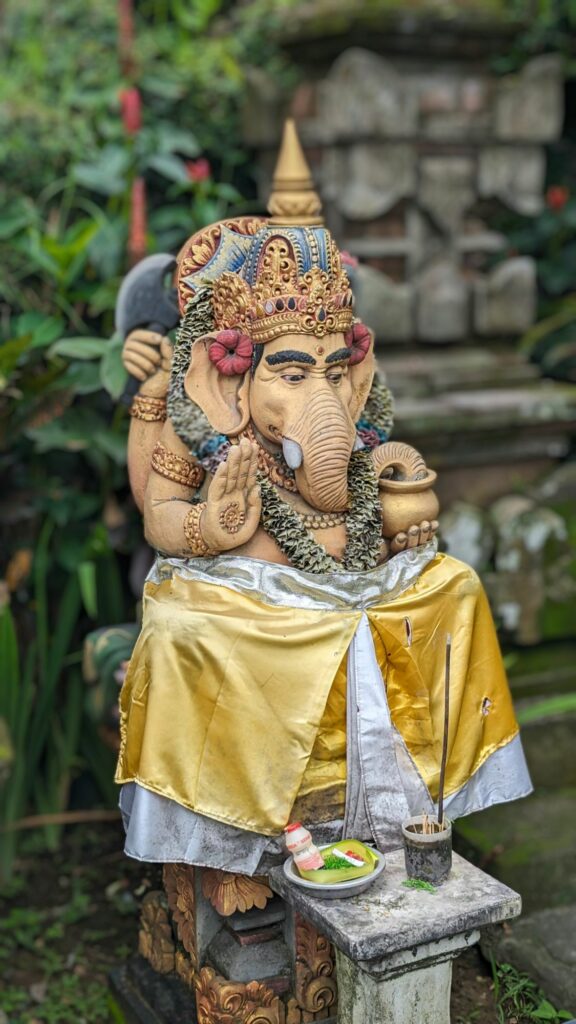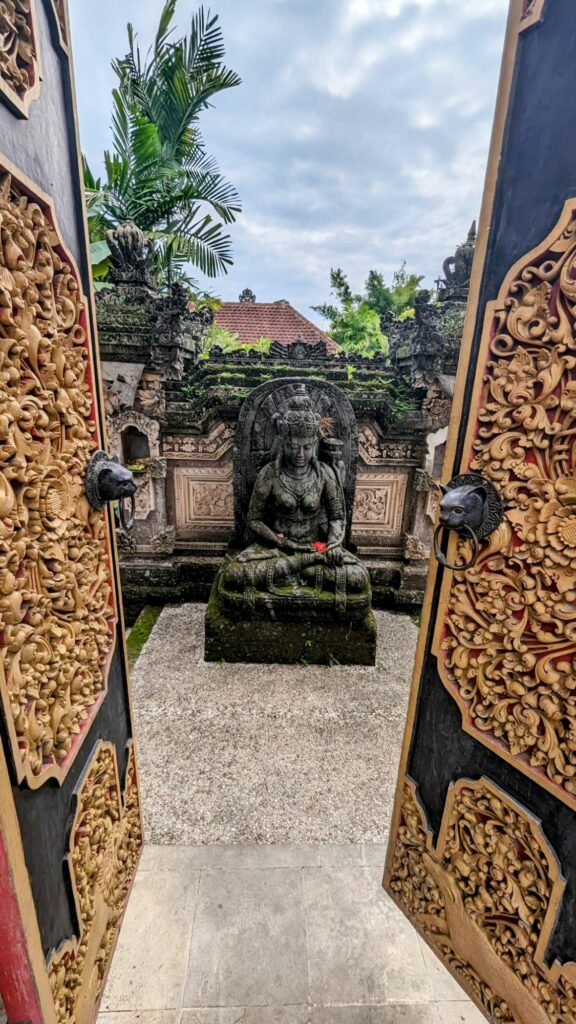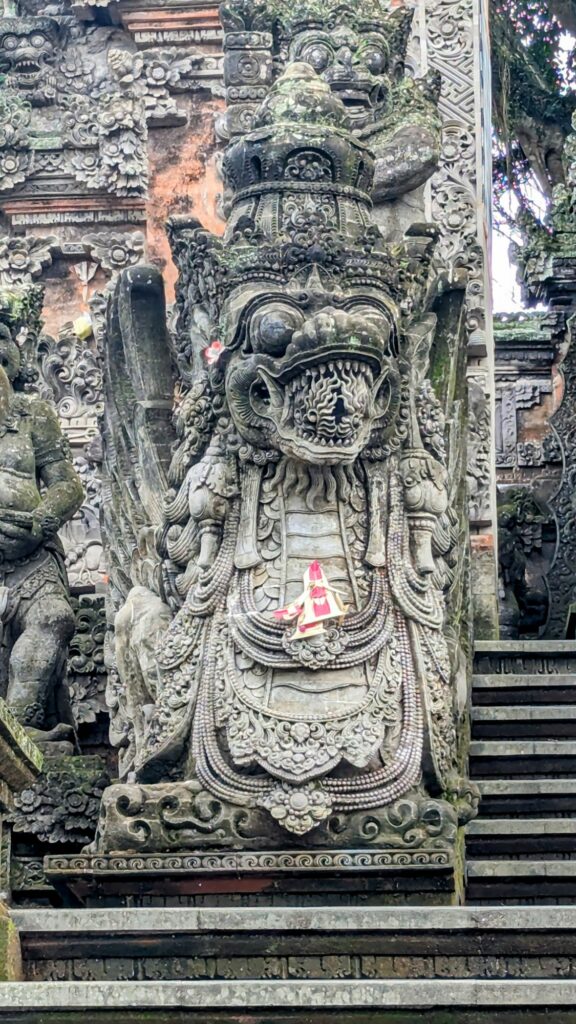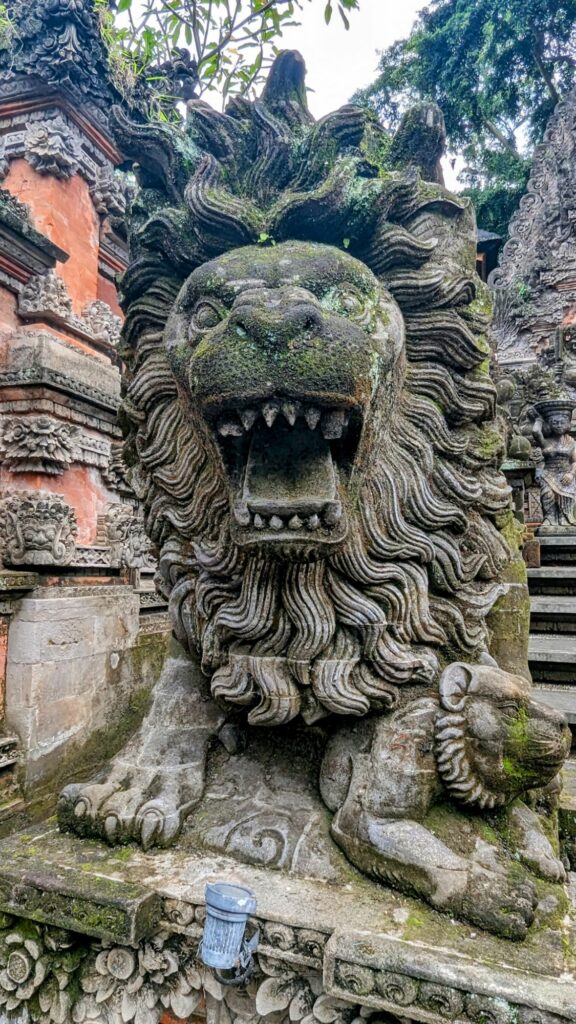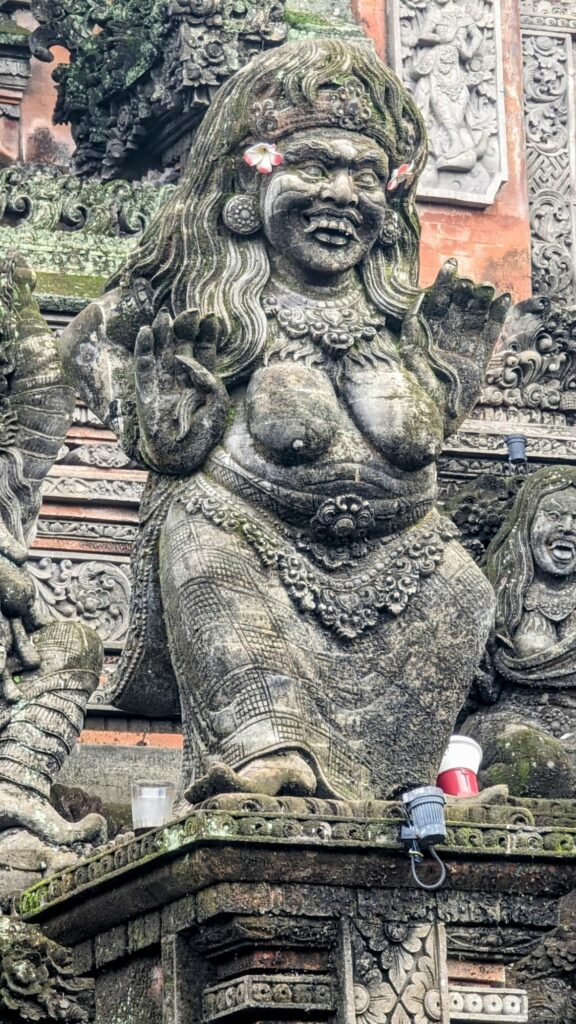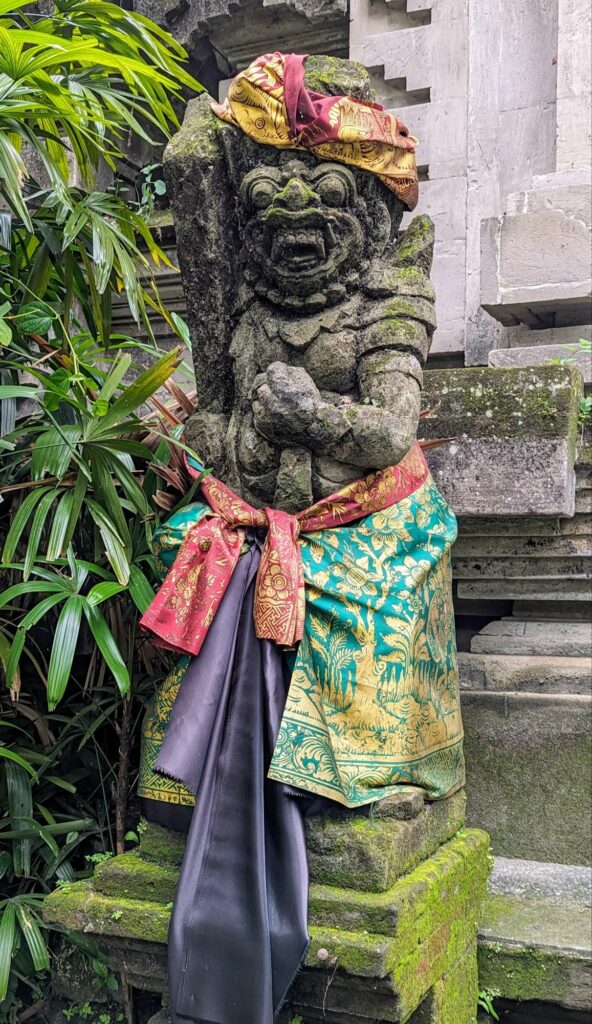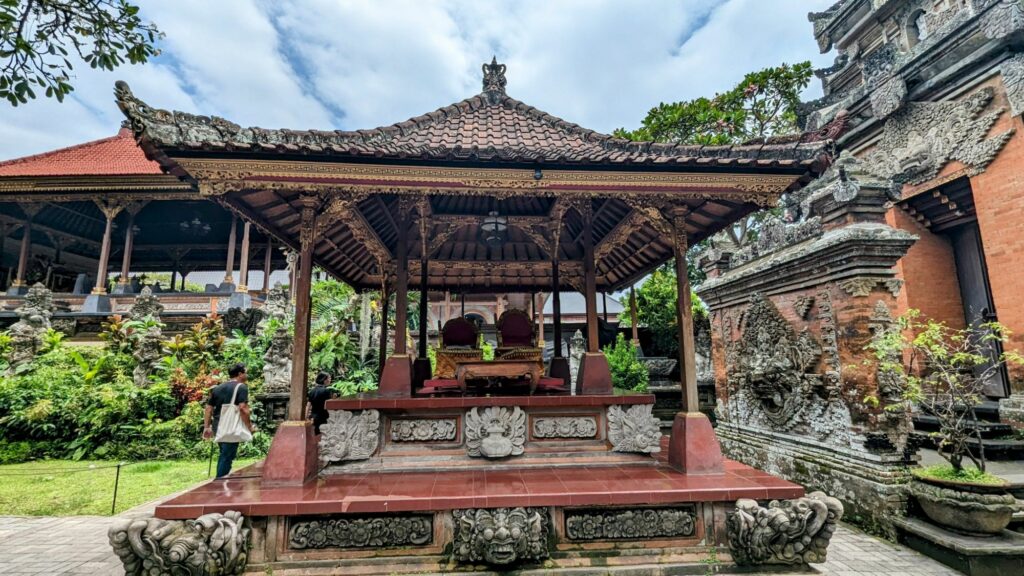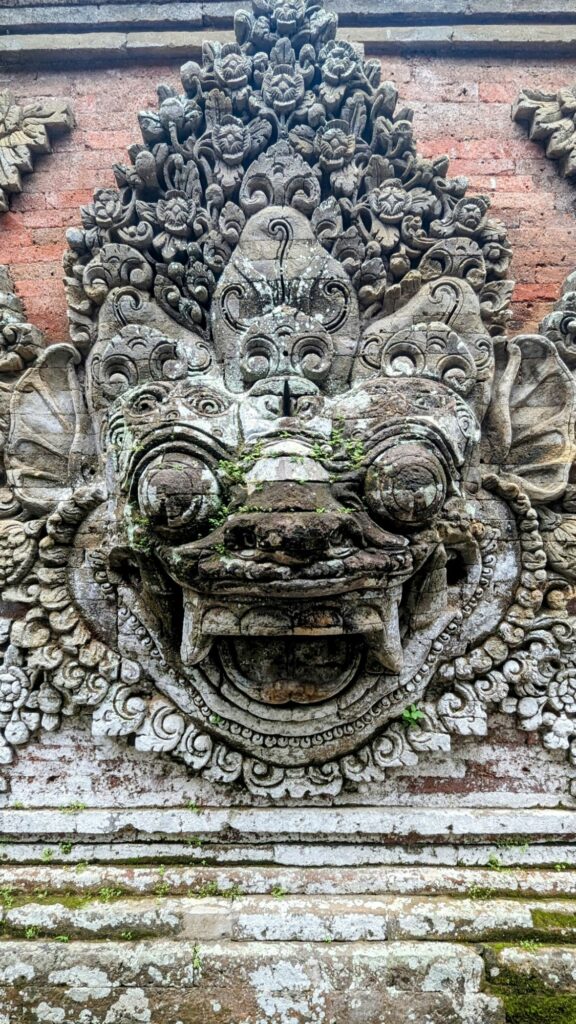Don’t take anything out that you don’t need and secure anything that you are carrying. These are the instructions for the Monkey Temple at Ubud, a 700 year old Balinese Hindu temple in a forest filled with sacred macaque monkeys. Monkeys with attitude and reknown for their nimble fingers. Our minibus pulls up in the heart of the complex and I am off camera in hand taking pictures. A scream suddenly pierces the silence. I turn around and see it is Suzanne, a large monkey is trying to tear off her skirt. An umbrella wielding tourist comes to the rescue and fendes off the would be simian sex offender.
Fast forward 40 years and I am reminded again of my dereliction of duty in failing to guard my spouse. Over lunch I gently suggest we revisit the monkey temple, promising to stay by her side and guard her. I can see the apprehension in her eyes but she says yes. Unsurprisingly 40 years changes a lot. We are greeted by a modern ticket office and complex with shops cafes etc. There are boardwalks in and out of the complex. This time there is evidence of food for the monkeys who are much more amiable. It is not long before Suzanne overcomes her “PTSD” and is enjoying the experience.
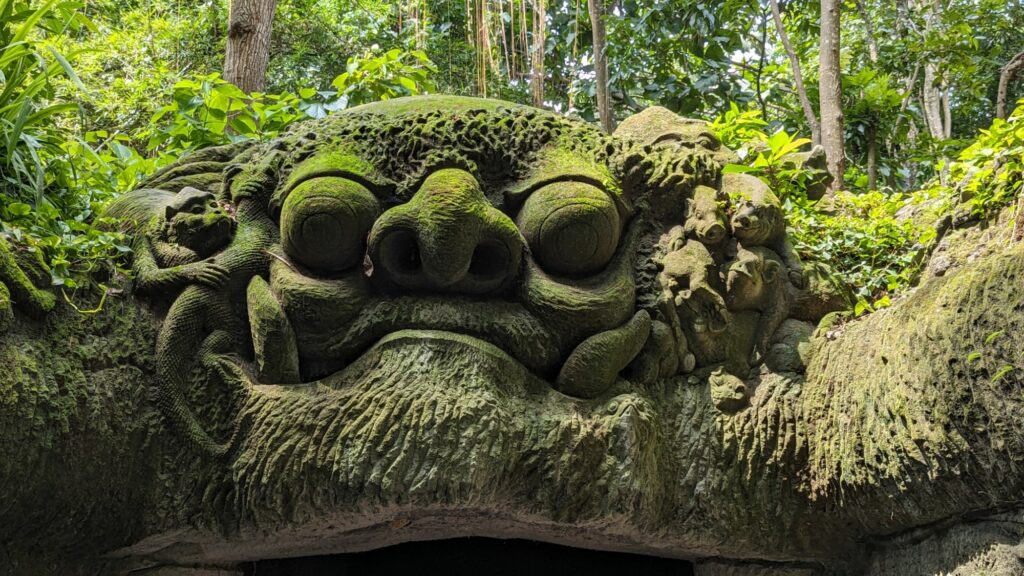
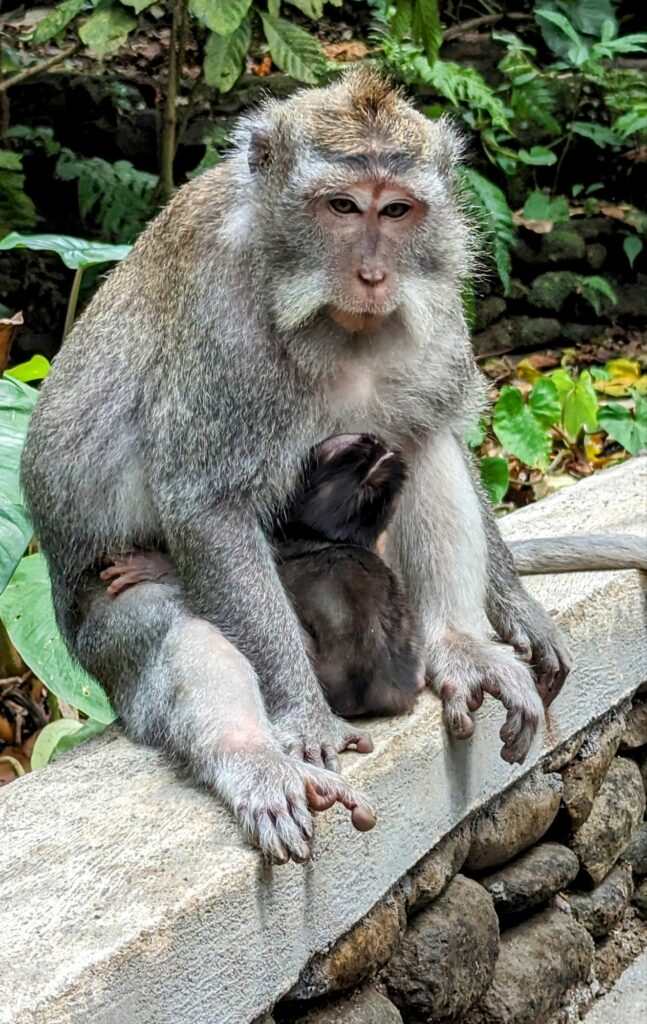
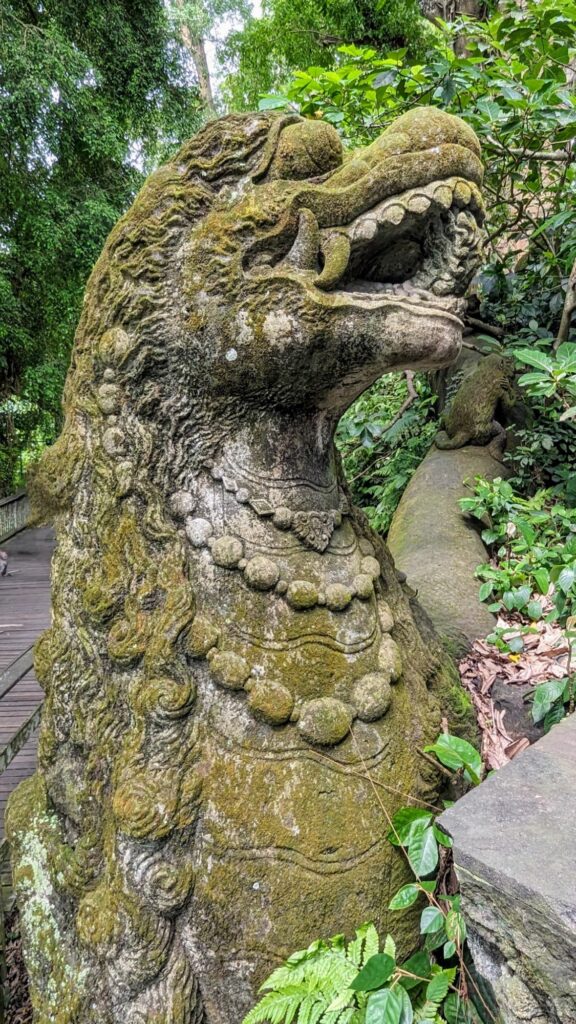
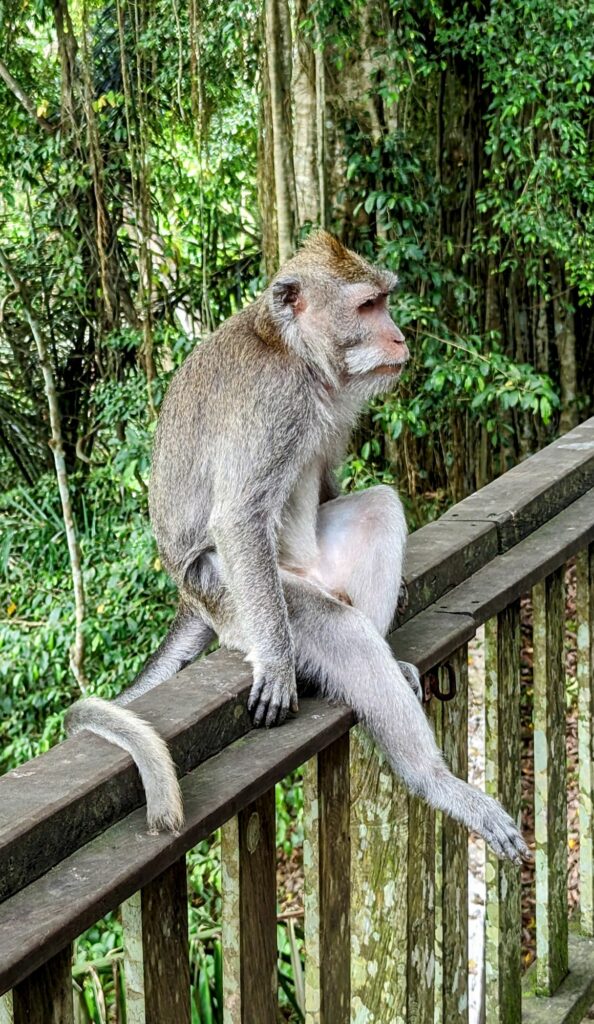

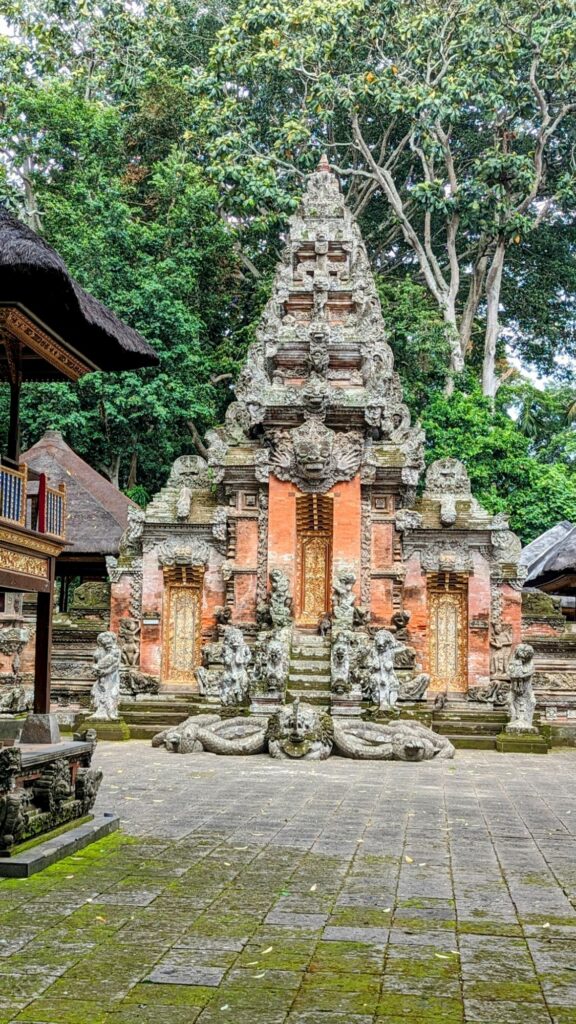
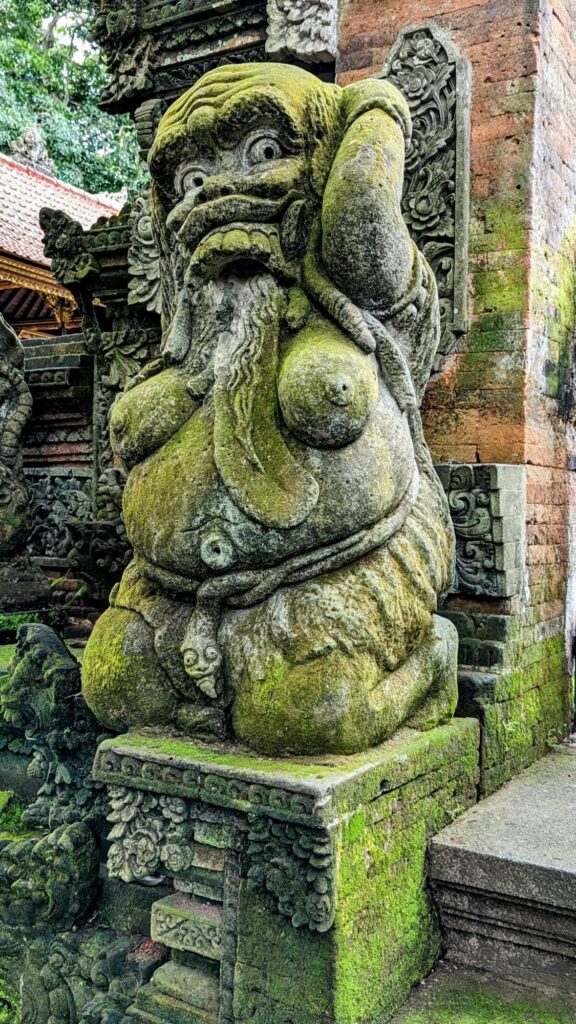
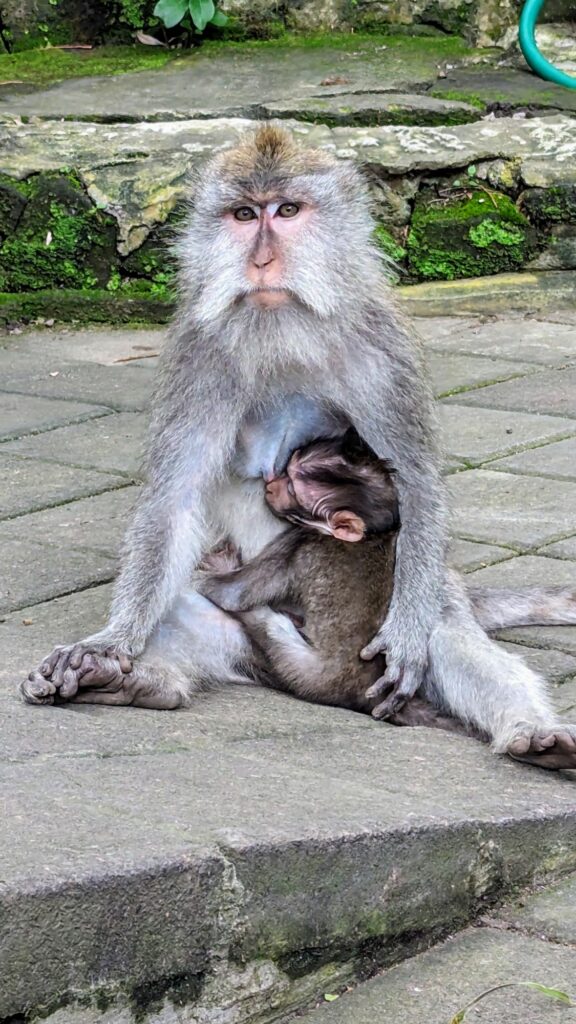
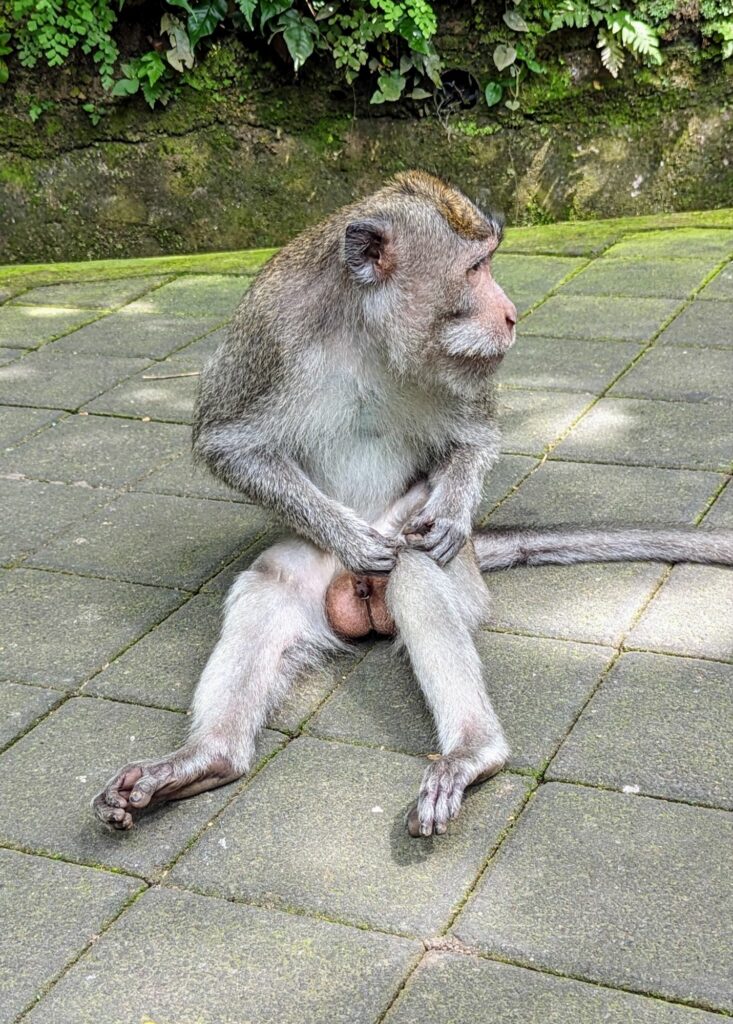
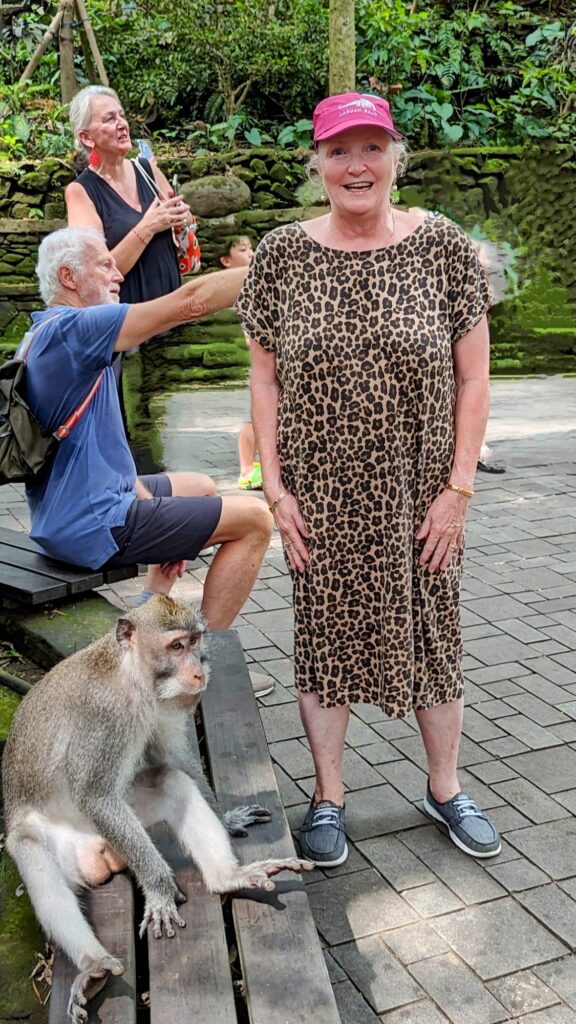
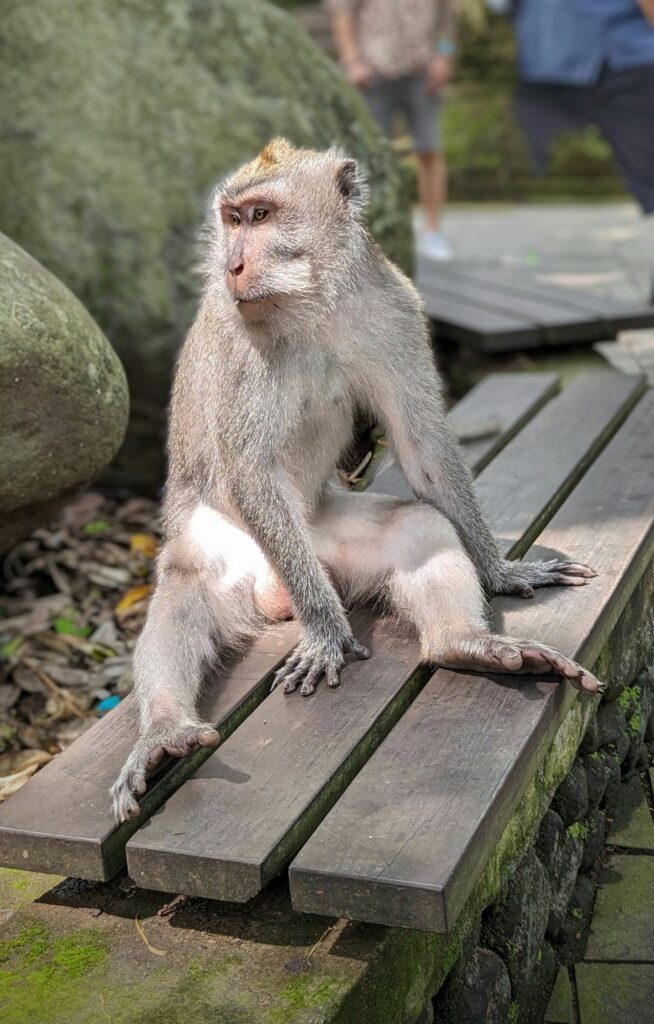
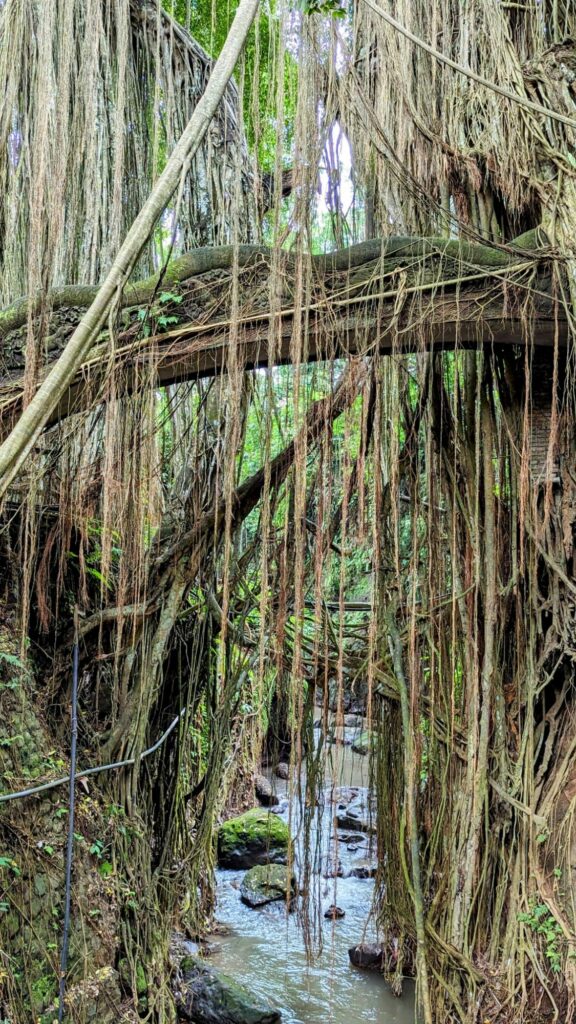
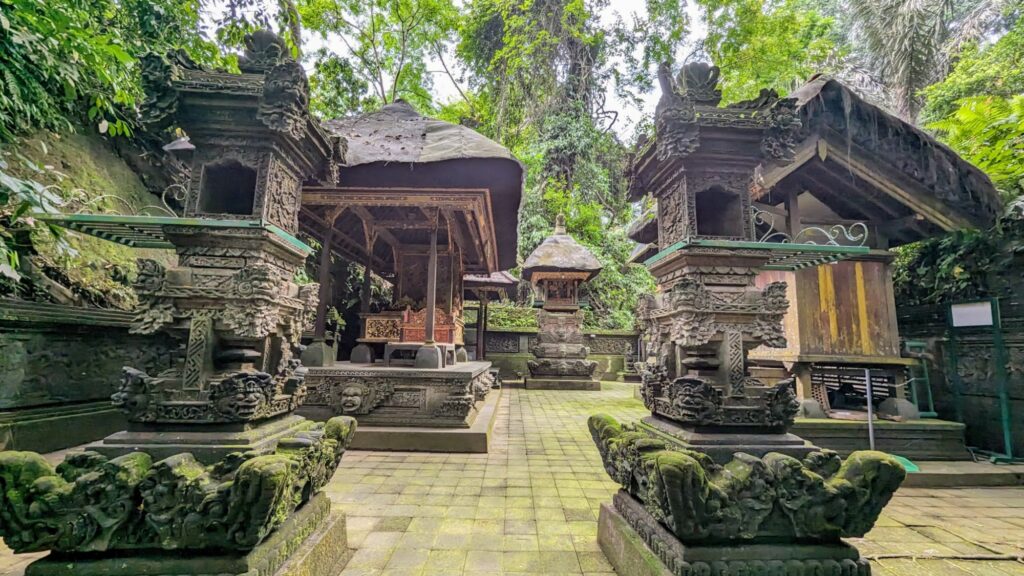
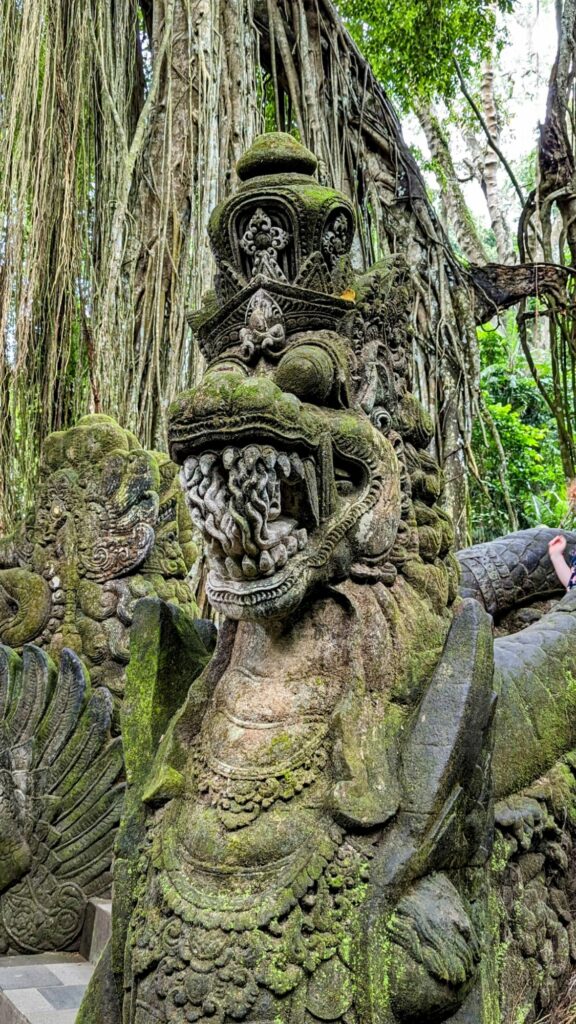
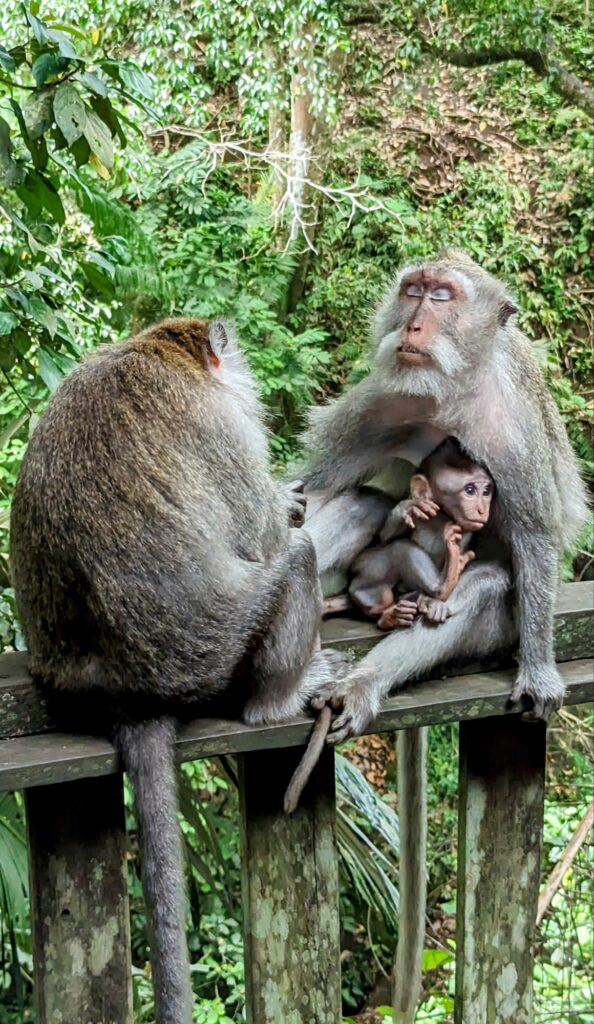
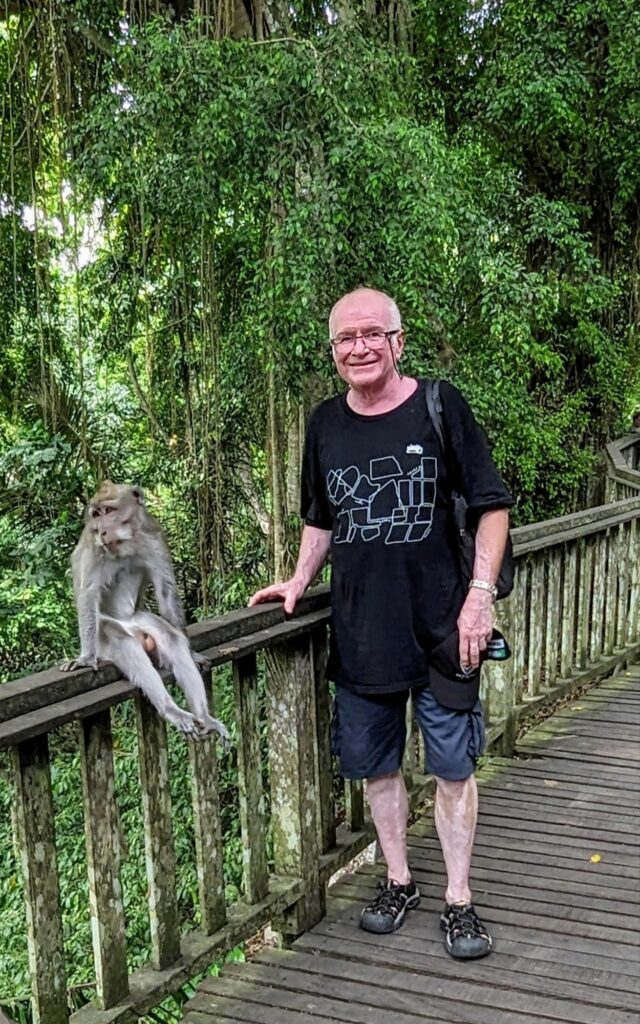
As we are leaving the complex there is a small booth for taking selfies with the monkeys for a fee. The sign said closed but, comically there is a monkey lying there relaxed. Presumably this is his gig. Soon a crowd gathers and we are all taking selfies.
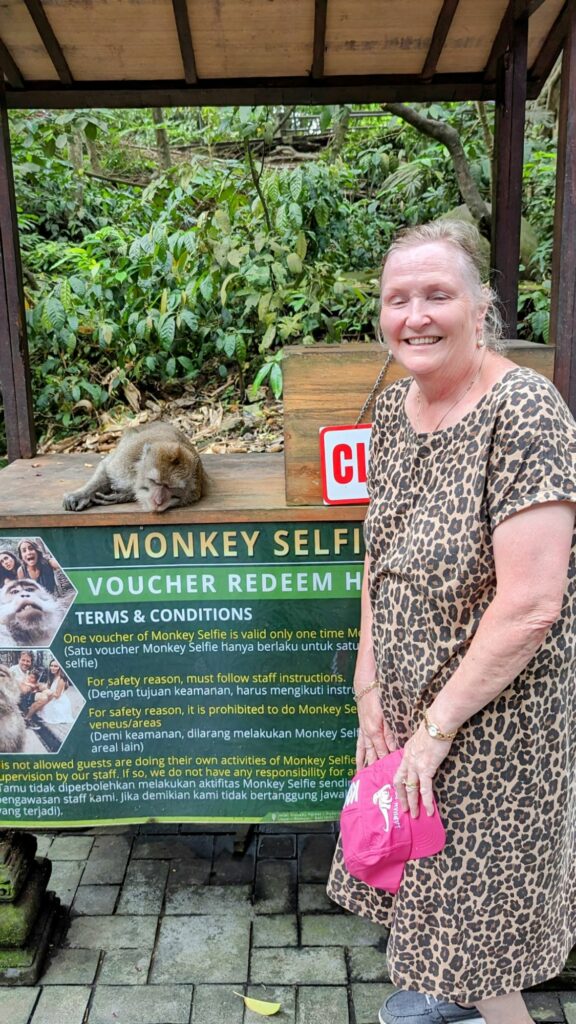
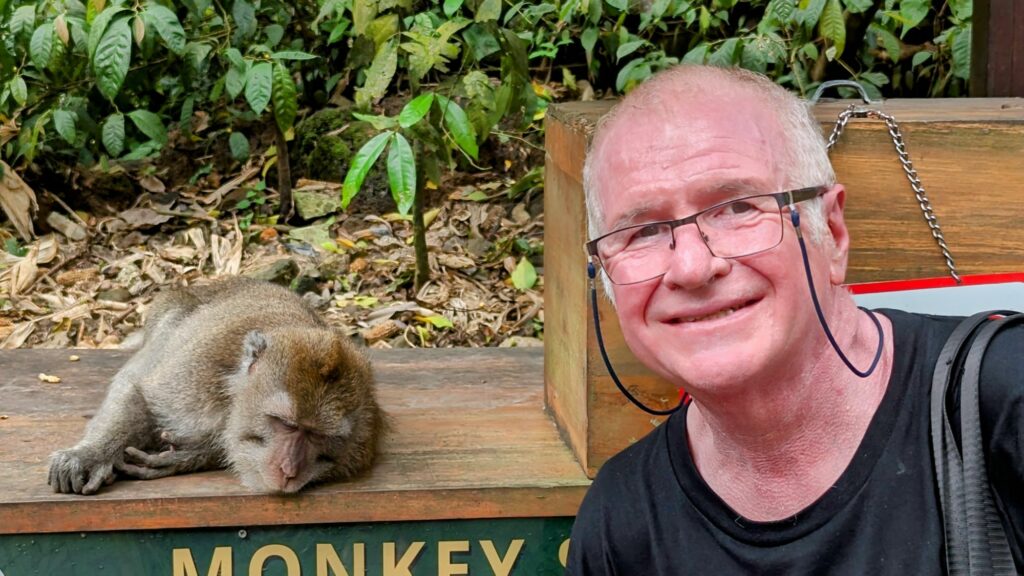
While there are some picturesque spots with Hindu statues and architecture, most of the town here is cafes and tourist shops. There is little here that would entice me to come back to Bali. And our 2 days here is just the right amount of time.
